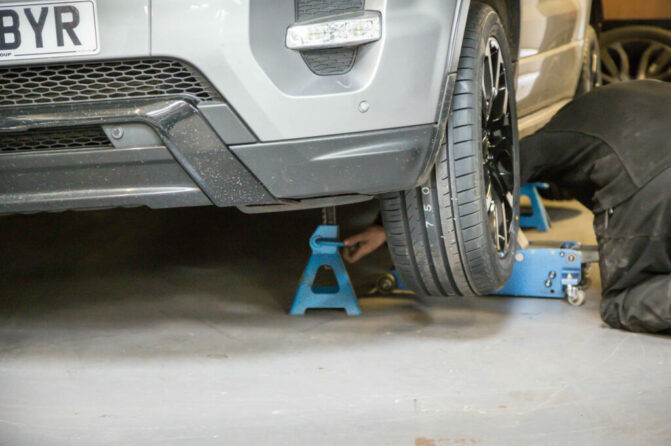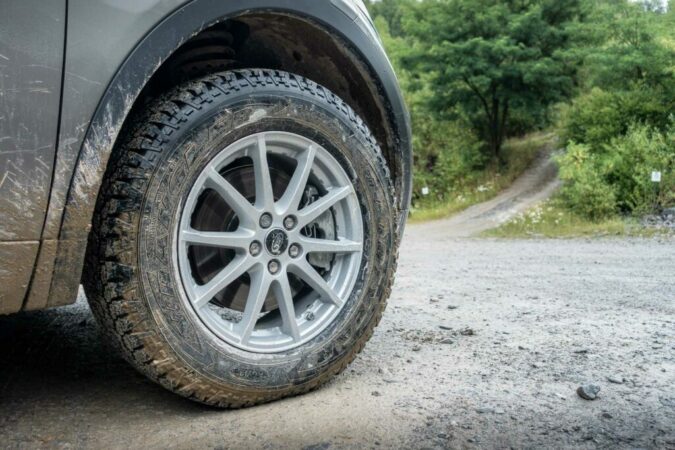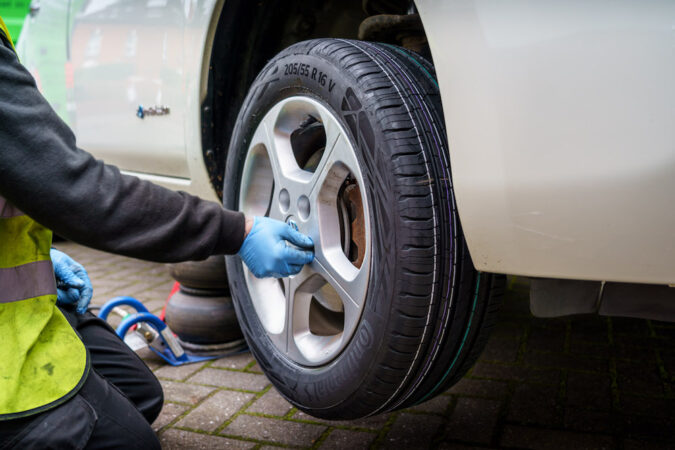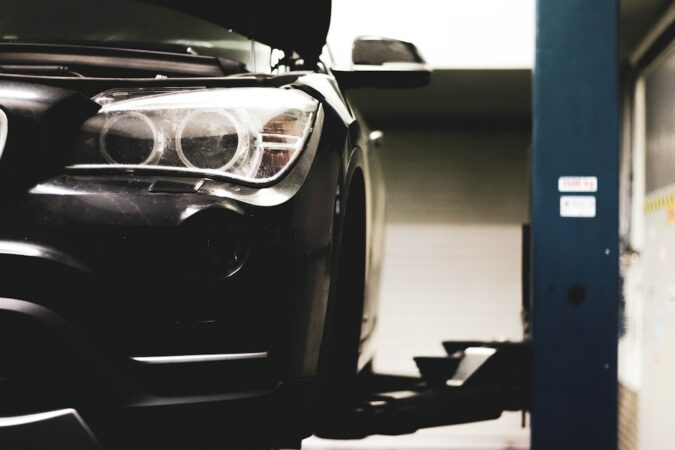Are you trying to improve your suspension and get more feel of the road? If this is the case, then you probably want to learn everything when it comes to the positive caster, since this angle is one of the angles that greatly affects the performance of your vehicle. And we are going to cover everything when it comes to it.
Knowing the right angles of adjustment could be a lifesaver for you as a car owner. Why I’m saying this? Well, I’m saying this because you will be able to tell if something is wrong with your suspension. Learning this stuff will help you determine if you suffer from a negative or positive caster and how this caster is affecting your car’s performance.
And the performance might worsen significantly if this caster is not well adjusted because some of your suspension components have failed and have worsened your caster angle. As you probably know, every degree of this angle count and even the slightest misalignment from the factory spec could worsen your drivability and will make your car drive poorly. But you shouldn’t worry because we will cover everything you need to know when it comes to the caster angle.
First, we will cover the basics of wheel alignment where we will learn everything when it comes to caster, camber, and toe. Then we will focus primarily on the caster. We will learn more about it and what role does it play in your car’s suspension. Then we will cover the types of caster and their characteristics. After this, we will cover the positives and negatives of the caster angle. Then we will focus on adjusting the caster and more. So, if you want to learn more about positive caster, follow along.
Understanding Wheel Alignment, Camber, Caster, And Toe?
When it comes to the car’s suspension and wheel alignment, everything is measured in angles. These angles like the positive caster determine the car’s drivability and performance on the road. But what are these angles that play such a big role when it comes to the car’s overall drivability? Let’s elaborate.
The first and primary angle which is really important for you to know is the camber angle. This angle is the angle that determines how your tire lies on the tarmac. A bad camber angle, especially positive camber can not only alter your driving ability of the car. But it can also ruin your tire performance. The ideal camber should be zero. Meaning that neutral camber is recommended for you to have.
The next angle is the caster angle. That we are discussing in this article. The caster angle is basically the angle from the wheel hub and the strut mount. But more on this in the following chapter where we will elaborate the positive caster in depth.
And the last important angle for you is the toe. When it comes to toe, there are two types of toe angle. Toe-in is when the wheels are pointing at the inside angle, and toe-out is when the front wheels are pointing outward. Zero-toe is the one you are looking for since you don’t want your tires to heat up and develop issues with increased wear.
What is important for you as a car owner is to keep all these angles at a minimum if you want to get the most out of your car when it comes to performance and usability. Having one of these aspects off, your car will suffer from bad alignment. Now let’s see more about positive caster.
What Is Caster?
Now before we learn the positive caster, let’s learn what is caster in general. This will be extra useful for beginners who are not experienced in cars and want to learn the basics of the caster angle and what it does. If you feel like you are better prepared, you can move to the following chapters where we will discuss the positive caster and negative in-depth. Here we discuss only what is caster and the characteristics of this angle.
So, what is this angle? Well, this angle is the position of the strut or shock in your vehicle. This is the simplest definition.
Just observe the strut and see if it’s straight or at an angle. If the top of the strut is pointing to the front of the car, you have a negative caster. If the strut top is pointing to the rear, then you have a positive caster.
And if you didn’t know, 99% of the cars have positive caster right from the factory. This angle is usually from 3 to 6 degrees. Depending much on whether this is a performance application or a regular commuter car. Performance cars have more excessive caster angles to improve the drivability on the track and other important aspects.
But what is the main objective of this caster angle? Well, its main objective is to cause the camber angle to change while cornering. Improving the cornering ability immensely.
The caster basically makes the car lean on corners and catch the corner much easier. Just like riding a motorbike. Reducing the chances of understeer in the process to a minimum. If you have a negative caster, for example, you might be facing some problem with oversteer. Now let’s cover both types of negative and positive caster in-depth.
Types Of Caster
Now as we learned what is caster and why caster is so essential for the overall handling of the vehicle. Now let’s focus more on both types of caster that are out there. As we learned, there are two different types. A positive caster and a negative caster.
Each of these caster angles has different properties and characteristics that have their negatives. But more on that later on when we are going to cover the pros and cons of these two types of caster. Now let’s focus more on them separately and learn more about how the car behaves when there is positive caster and negative caster. So, keep up with us.
Positive Caster
As we learned in the previous chapters, the positive caster is when the lower pivot point is in a position that is in front of the top pivot point.
A pivot point is a position where the strut is mounted. So, the lower pivot point is mounted on the knuckle. While the top pivot point is mounted on the strut tower.
Meaning that there is an angle between the two points and this angle is called positive caster. Most modern cars are running this type of suspension on the front wheels and this suspension usually works well with the car.
Modern cars have a positive caster of about 3 to 6 degrees. The more of an angle, the more serious the car is when it comes to performance. Usually, on regular commuter cars, the angle is about 3 degrees.
This type of angle offers great stability but also comes with heavier steering. But modern cars all have power steering, so this problem isn’t a real issue. Since the power steering is doing all the heavy lifting when it comes to this stuff.
What is useful to know is that the positive caster is increasing the negative camber when you turn the wheels sharply. Improving the cornering ability in the process and maximizing the usage of the tire.
Even though, when the caster is too big, there will be enormous understeer and the car will not behave as it should. This is most notably on old cars that are suffering from this issue. But more on that later.
The caster angle unfortunately is not really adjustable and only if you purchase aftermarket coilovers you will be able to adjust it.
Negative Caster
Now as we covered the positive caster, let’s cover the negative caster and learn more about this angle as well. Since you have to learn both types really well to make a good conclusion of which angle is the best when it comes to performance.
So, what is negative caster? Well, a negative caster is a situation when the top pivot point of the strut is pointing at the front of the car, while the lower pivot point is behind the front pivot point. Meaning that the strut is not straight or has a positive angle. But a negative one.
This type of caster will deliver you an easier ability to steer the wheel. As you can tell on older vehicles whose steering wheels you can turn with your small finger.
But this ease of turning the steering affects the overall performance of the steering system. Resulting in sloppiness and poor performance under heavy turning.
With this type of negative caster, you will feel like you are driving a boat and not a car. And this is not good, especially when you need the most from your car.
If modern cars use negative camber they would basically be very unsafe under the high speeds they are usually driving, resulting in a lot of incidents on the road as well as car crashes. So, you get the point why we need so much that positive caster and the ability to maneuver our cars like on rails.
That’s why the negative caster in modern cars is not a normal thing and it was ditched for a reason. This often happens if the car was in an accident and some of the strut towers were pushed a little bit. Now let’s see the positive caster pros and cons.
Positive Caster Pros And Cons
Now as we learned the types of caster which are the positive and the negative caster. Now let’s focus more on the positive. Namely, because this type of caster is included in many of the road-going vehicles, and basically every car out there that is purchased new, has a positive caster.
Still, even though it is used in a lot of applications and vehicles out there. This type of caster has some positive and negative sides. Also known as pros and cons. Knowing this will help you out learning if you are suffering from excessive caster angle on your car and if the car needs an alignment to be performed. So, what are the pros and cons of this type of caster? Let’s elaborate more on that next.
Positive Caster Pros
Now first let’s cover the pros of positive caster. As you probably know, the pros of this type of caster outweigh the negative sides because this type of caster greatly improves the controllability and maneuverability of the vehicle compared to the negative caster.
This means that cars with this type of caster offer excellent performance in the straight line but also good performance while cornering at high speeds.
As we already told you in the previous chapters. The positive caster is increasing the negative camber of the vehicle while cornering. Increasing the negative camber means that the vehicle’s tires stick to the ground the car basically drives like it’s on rails.
All of the race cars out there use positive caster to help the cornering capability. And as you can tell, the newer the car, the better the handling. So, why is this the case?
Well, this is the case because engineers understood the positive effects of this type of caster and decided to implement it in commuter cars.
And our cars drive extremely well, even with stock suspension because of these improvements that took place in this aspect. No more floppy steering that is unsafe. But steering that is extremely sharp and turns really well at higher speeds. That’s why this type of caster will not go away soon and we will keep seeing it in cars out there.
But there are not only positive sides when it comes to this positive caster. There are also some negative sides that we are going to discuss in the following chapters where we will see what you should expect from this type of caster. So, if you want to learn more, follow along.
Positive Caster Cons
Now let’s cover the cons of positive caster. As we mentioned, everything has its positives and negatives out there and so does the caster. So, what are these negative aspects of this type of suspension alignment? Let’s elaborate.
The first thing that you will notice with this type of caster is the heaviness of the steering wheel. The steering wheel will feel rather heavy if you don’t have power steering in your car. The steering wheel will be close to impossible to turn while in a stationary position without power steering. And this is the main reason why power steering became mainstream. You need this aid to drive a car with a suspension like this.
The second downside of positive caster is that with too much positive angle, you will lose control under heavy cornering at high speed. The car will understeer like crazy and you will basically lose control.
High-speed cornering with too much positive angle will result in excessive wear and a problem called tire feathering. This is the situation when the tire wears at an angle. Something which is not ideal and you probably want to avoid this problem from ever happening. That’s why it is recommended not to race a car with a stock suspension that doesn’t have the caster adjustment available.
If you want to avoid this situation, you should adjust the caster from 3 to 6 degrees tops. Anything over this will make the car understeer a lot more and be basically uncontrollable. And you just don’t want that happening to you. But what makes the caster angle misalign? Let’s elaborate on that next.
What Causes The Caster Angle To Misalign?
So, what causes the caster angle to misalign and you to end up with too much positive caster? There are in fact many reasons for this problem occurring in vehicles. But the most notable reason why this happens is the wear and tear of the suspension components.
The most common reason is the control arm bushings that are located on the control arm. They are basically holding the control arm in check.
And as you probably know, the control arm holds the wheel. So, when there is play in the control arm bushings. The whole strut assembly can move forward or backward. Destroying the caster angle in the process and ruining the handling performance of the vehicle.
A broken spindle can also cause this problem, this spindle is the one that holds the lower part of the strut of your vehicle. These components can get tweaked if you hit a pothole at high speed and damage your positive caster angle.
Not to mention that there could be other damage to the control arm that can get bent as well as the strut which also can get damaged if the car was into an accident.
But the biggest problem is when the car is in a collision and the strut towers are tweaked. These strut towers are basically holding the struts at the top. Without these towers being aligned properly, the car will suffer from positive camber if the tower is pushed in. So, beware of these strut towers and see if they were repainted for some reason. A repaint of the engine bay can indicate that the car was in an accident.
If you purchase a car like this, it might require spending a lot of money to get the positive caster fixed.
How To Adjust Caster?
We learned all about caster angle and that there is positive caster and negative caster. Now let’s see how you can adjust the caster angle on your car? Is this doable?
Unfortunately, not. The caster angle is set from the factory and you basically cannot tweak this angle. Except, if you go for an aftermarket suspension.
If you decide to install aftermarket components, you will be able to adjust the caster angle. But what these components are? Well, there are a few options out there that you might want to try.
The first way that you can do this is to purchase adjustable arms. With these adjustable arms, you will be able to adjust the caster angle.
The second thing you can try is to install offset bushings. These offset bushings are mounted either on the front or on the back of the front wishbone and they will allow you to change the offset.
Another way that you can try is to install camber/caster alignment plates. These plates are installed on top of the strut. Meaning that they lie between the strut and the strut tower and allow adjustment of the strut angle. Resulting in positive caster for a couple of degrees more than the stock suspension.
All these mods work the best with aftermarket suspension components like coilovers. That’s how you will get the most out of them if you go for performance and the ability to maneuver the car on the track extremely well.
Cost To Adjust Caster Angle?
But what is the cost to adjust the positive caster and make it even more positive? Well, that really depends on the mod that you go for. If you go for new aftermarket arms, offset mounts, or bushings, you will expect to pay somewhere between $75 and $250 depending much on what option you go for.
Not to forget that you will also need some aftermarket coilovers to get the most from your vehicle on the track and these can also cost from $300 and up to $2,500. Depending much on how deep is your pocket and how much you really want that positive caster. That’s why you need to plan your budget when it comes to this stuff accordingly. Start with the cheaper upgrades to adjust the caster and then move on to more extreme mods.
Wheel Alignment: Camber, Caster, and Toe Adjustment Facts
- Proper wheel alignment is essential for vehicle and tire longevity and for safe and comfortable driving.
- Camber refers to the angle of the wheels relative to the vertical of the vehicle and can be positive or negative.
- Positive camber improves stability, while negative camber is useful for high-performance vehicles that require better cornering.
- Too much positive or negative camber is dangerous and bad for your tires.
- Caster is the angle that identifies the forward or backward slope of a line drawn through the upper and lower steering pivot points.
- Positive caster increases the lean of the tire when the vehicle is cornering, while returning it to an upright position when driving straight ahead.
- Negative caster allows you to steer less around turns, but may cause you to drift if you are driving straight forward.
- Toe is a measurement that determines how much the front and/or rear wheels are turned in or out from a straight-ahead position.
- Toe-in provides increased stability and discourages turning, while toe-out promotes enhanced turning ability.
- Proper toe alignment ensures all four wheels roll parallel to one another, providing ideal straight line stability, corner entry, and very little tire wear.
Conclusion To Positive Caster
In this article, we have covered quite a bit when it comes to the positive caster. First, we learned what is wheel adjustment and what are the three important aspects of it. Which are the camber, caster, and toe.
Then we covered more about the caster and we covered the different types of caster that are out there. There is positive and negative caster. Most modern cars are running positive. Since it delivers a lot of advantages that we also elaborated on in the pros and cons chapter.
Lastly, we learned how you can adjust the caster on your car. For this practice you will need to get some aftermarket mods since tweaking the stock suspension is not possible as it is.




